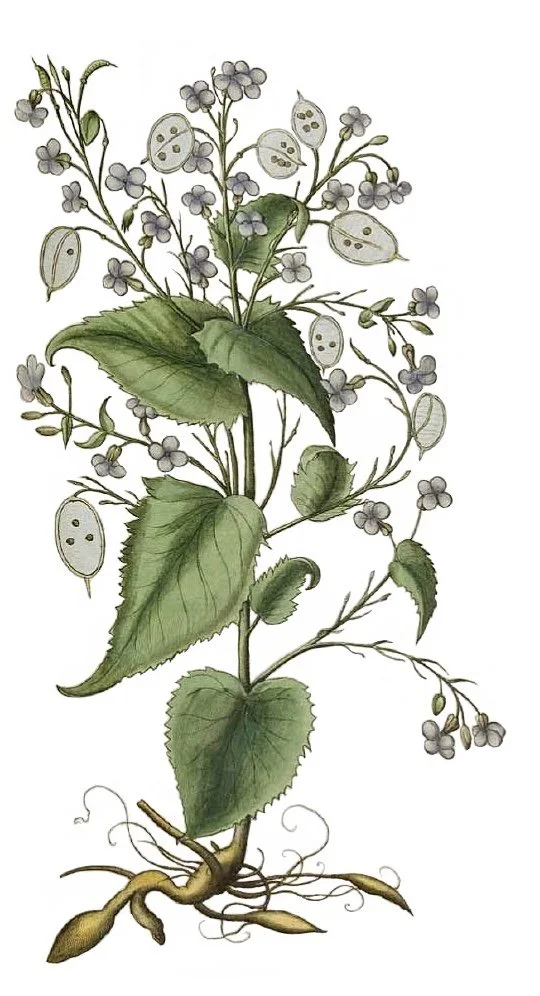White Moonwort
White Moonwort
WHITE MOONWORT SEEDS
Lunaria annua albiflora
This species is native to the Balkans and in bloom is very reminiscent of Hesperis matronalis, another European native that now grows wild throughout New England. This rare white selection is the only one we would have in the garden. The pure white flowers are followed by fantastic flat translucent “fruit" that make for the most spectacular dried floral fare. Especially ideal for monochomatic landscapes and dedicated moon gardens.
Beloved by Medieval and Victorian gardeners, this species has fallen out of favor somewhat but is absolutely deserving of a resurgence in popularity given the newfound appreciation of naturalistic gardens festooned with dried seedheads. This species is also a prolific self-sower, making it highly appropriate for expansive informal landscapes. Plant height is variable depending on moisture, and can range from 1' to 3'.
An easy biennial, these seeds may be sown outdoors in spring through late summer for bloom the following spring. The young plants unfortunately do not transplant well, but when they are started early indoors and survive being transplanted they will occasionally bloom in the first year. We do not necessarily recommend this, however. Best to just let these plants do their thing, as they are quite good at it. Once established they will seem positively perennial. Prefers average garden soil in part sun or dappled shade, and will tolerate full sun given sufficient moisture. Listed as hardy in zone 5 but we have had them disappear in particularly cold winters. Probably most reliable in zones 6-8.
Bright white blooms appear in the Northeast May through June, rarely into July. Flowers are followed by seedpods that begin green and ultimately dry to brown, but the brown is merely a papery husk that can be peeled back to reveal the shimmering translucent discs that give the genus its name. To harvest for drying, cut the seed stalks just as they turn brown and hang upside down in a well-ventilated space to dry completely. Once dried peel back the brown husk and arrange. Perfection.
Packet contains at least 20 seeds.
